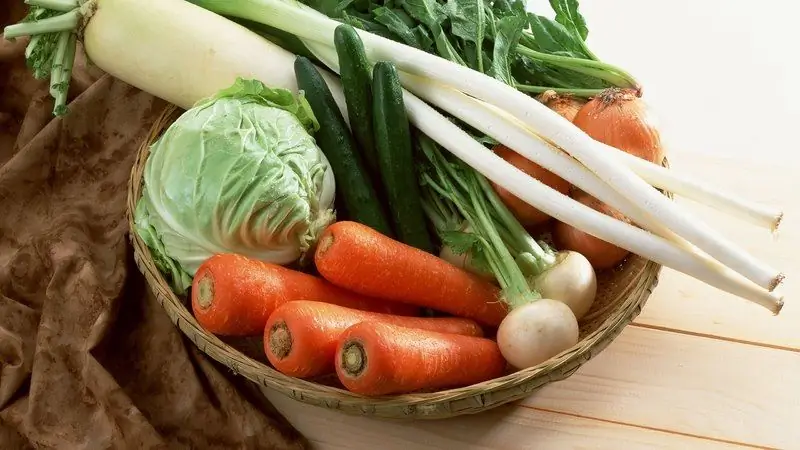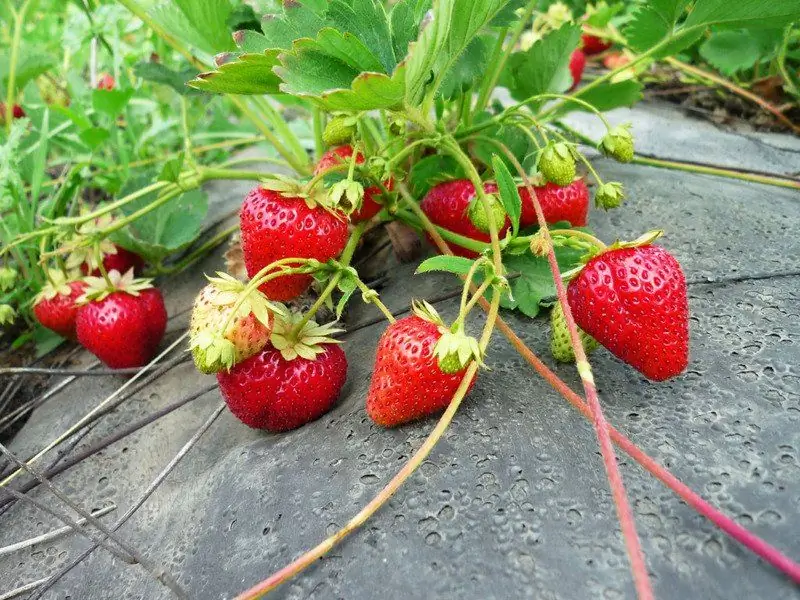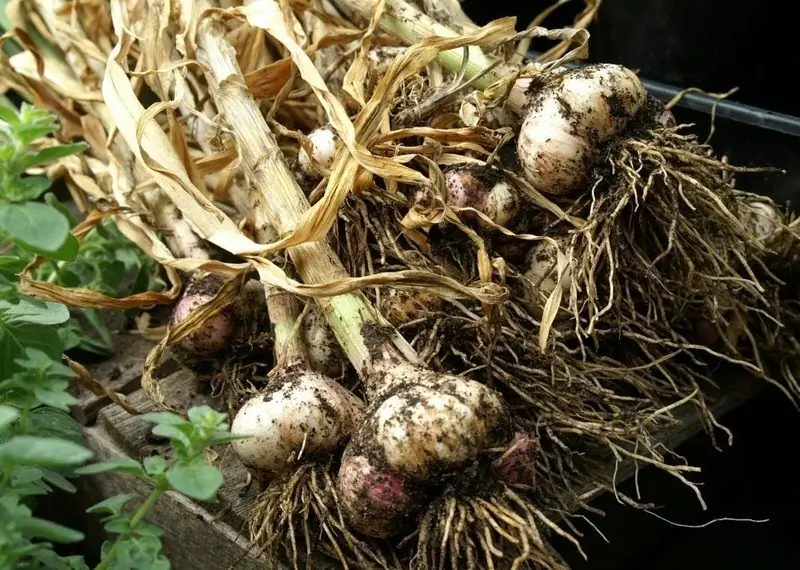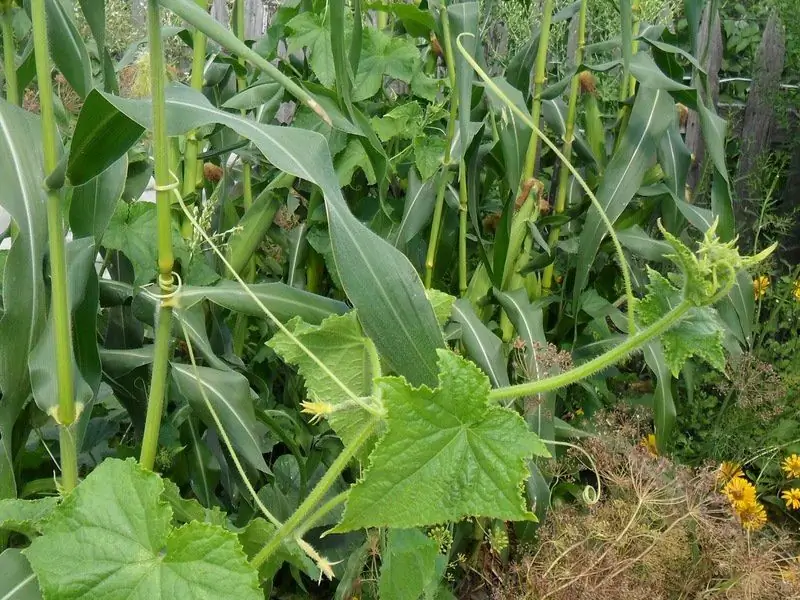
Table of contents:
- What to plant after cabbage and carrots next year and what to combine planting with
- What is crop rotation and why is it needed
- What can you plant after cabbage and carrots for the next year
- What should not be planted after cabbage and carrots
- Precursors for cabbage and carrots
- What can be planted with cabbage and carrots in one bed
- Reviews of gardeners
- Author Bailey Albertson [email protected].
- Public 2023-12-17 12:53.
- Last modified 2025-01-23 12:41.
What to plant after cabbage and carrots next year and what to combine planting with

To get good yields of vegetables, it is important to know the basics of the mutual influence of vegetable plants on each other in order to be able to correctly plan planting in the garden.
What is crop rotation and why is it needed
Crop rotation is a system of alternating vegetable crops in the garden. Crop rotation purpose:
- Rational use of soil fertility and applied fertilizers.
- Increasing the yield of vegetable plants.
- Control of the spread of pests and diseases.
In most cases, the same vegetable crop can return to its former place of cultivation no earlier than after 3-4 years. In the case of particularly dangerous diseases, this quarantine period is increased to 5-6 years.
What can you plant after cabbage and carrots for the next year
Cabbage, for which large doses of organic fertilizers are applied, is a very good precursor crop for onions, garlic, beets, carrots, which need fertile soil, but do not like fresh manure.
After any type of cabbage, you can also plant:
- nightshade - potatoes, tomatoes, peppers, eggplants, physalis;
- pumpkin - cucumbers, zucchini, pumpkin, watermelons, melons;
- legumes - peas, beans, beans;
- garden strawberries.

Carrots give excellent yields when sown after abundantly fertilized organic cabbage
After carrots, you can plant:
- cabbage, radish, turnips;
- beets;
- onion garlic;
- nightshade;
- legumes;
- strawberries.
What should not be planted after cabbage and carrots
After cabbage, you can not plant any plants from the cruciferous family:
- all types of vegetable, fodder and ornamental cabbage;
- turnips, turnips, rutabagas;
- any kind of radish, including radish and daikon;
- mustard, arugula, watercress.

Any types of cabbage can be returned to the previous garden no earlier than after 4 years
After carrots, you can not plant any related plants from the umbrella family:
- parsley
- celery,
- parsnip,
- dill,
- fennel.
It is undesirable to plant cucumbers, zucchini and salad immediately after carrots. They have a common disease with carrots - white rot, the causative agent of which can also persist in the soil.
Precursors for cabbage and carrots
Cabbage can be planted after any garden crops except cruciferous crops.
Carrots can be planted after any plant, except for umbrella, lettuce and pumpkin. It grows very well after potatoes or cabbage that have been abundantly fertilized with organic matter.
What can be planted with cabbage and carrots in one bed
Mixed planting of different vegetable crops on the same bed is often used to save space and for mutual protection of these plants from pests.

Celery scares off cabbage butterflies from cabbage
To scare away cabbage butterflies and other harmful insects next to cabbage, you can plant celery, dill, parsley, marigolds, mint. A bed of late cabbage can be compacted early in the season with early ripening radish or salad. When choosing a neighborhood for cabbage, it should be borne in mind that cabbage plants with wide spreading leaves take up a lot of space in the garden and can shade their neighbors.

Carrots and onions on the same bed protect each other from pests
Close proximity to onions is very useful for carrots. This option is mutually beneficial: onions scare away carrot flies, and carrots scare off onions.
In spring, carrot beds can be compacted with quickly ripening radishes or lettuce. Carrots get along well on the same bed with parsley. Along the edge of the carrot bed, you can place a row of beets or celery.
But dill and fennel are better planted separately: in close proximity, they oppress carrots with their phytoncides.
I usually alternate transverse rows of onions and carrots in one long bed. From one end of the same bed I sow parsley, from the opposite side - beets. When sowing, I add several radish seeds to the rows of carrots and parsley, so that it sprouts early and shows where the seedlings of more taut-like umbrella crops will be. In the crop rotation, I get carrots after potatoes, and after carrots - legumes.
Reviews of gardeners
The correct alternation and combination of garden crops will help to get high yields of ecologically clean vegetables at the summer cottage.
Recommended:
What To Plant After Strawberries Next Year And What Not To

Strawberry crop rotation rates: which crops can be planted and which ones are better not to plant after strawberries
Fresh Cabbage Salads: Simple And Delicious Recipes With Carrots, Cucumbers, Corn, Apples, Vinegar, Green Peas, Sausage

The subtleties of cooking cabbage salads. Recipes: with cranberries, carrots, apples, beets, mushrooms, sausages, crab sticks, tuna, feta cheese, etc
What To Plant After Potatoes For The Next Year And What To Combine Planting With

How crop rotation rules explain the presence of good and bad predecessors in the garden. What can and can not be planted after potatoes, as well as on the same bed with him
What To Plant After Garlic And Onions For The Next Year And What To Combine Planting With

What are the rules of crop rotation based on, what do they advise to plant after onions and garlic, and what is prohibited. What can be planted next to them
What To Plant After Cucumbers And Zucchini For The Next Year And What To Combine Planting With

What can you plant after zucchini and cucumbers for the next year. What is the reason for the choice of subsequent crops. That grows with cucumbers and zucchini in the same garden. Reviews
